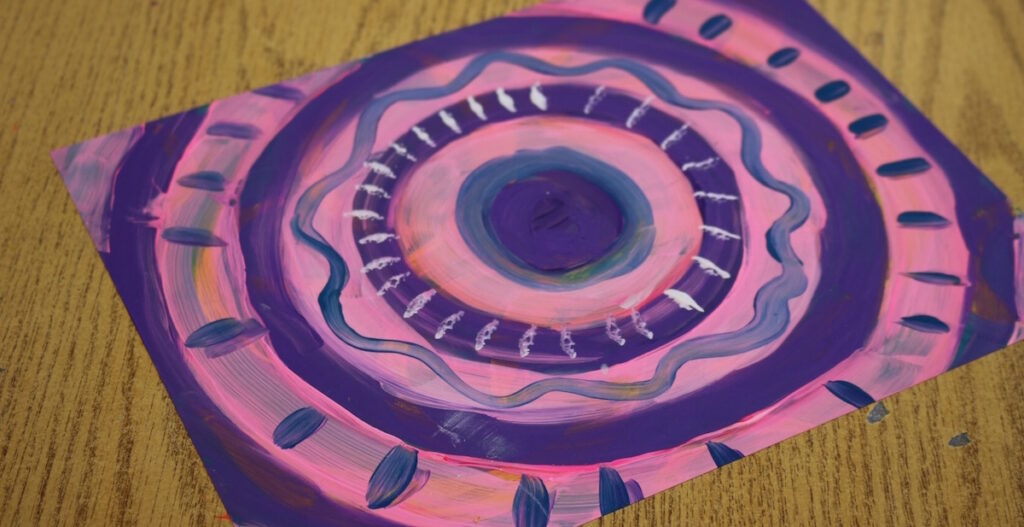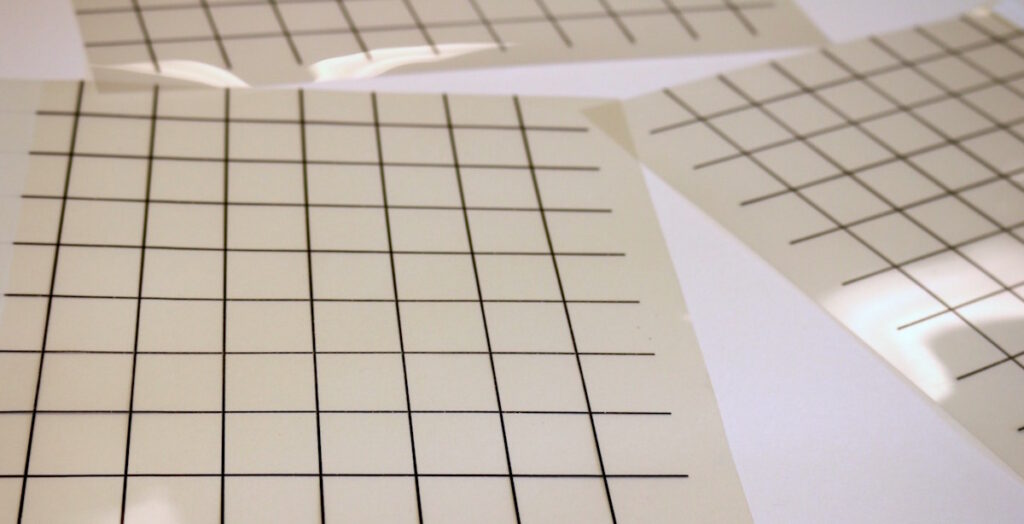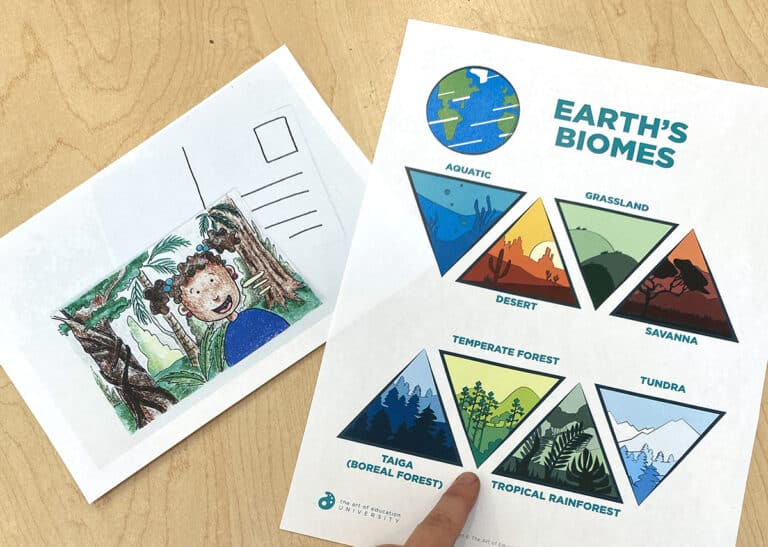When you walk into the copy room or supply closet at your school, it can be scary. To the blind eye, it is a place to get some work done and grab some basic supplies. But then you start digging. You run across supplies that make you think, “What is this?” or, “They still make these?” The art teacher in all of us finds a way to use these materials in our classrooms. Among these materials, you’ll find transparencies collecting dust.
Today I am going to share 7 ways you can use transparencies in your art room.
1. Stencils

If you are doing a project using stencils, consider using transparencies. They are easy to cut using X-ACTO knives or scissors and can be reused. Digital or hand drawn designs can be incorporated into the stencil as well. These transparency stencils work perfectly when monoprinting with Gelli plates.
2. Transparency Art

Those of you that teach a Digital Arts or Technology in Art course know that one of the downfalls is not being able to print out student work. Many of us just don’t have the budget to print out hundreds of color copies. Using a transparency can be a way to add some color to a digital work without breaking your budget!
Simply have your students create a black and white design, print it out on a transparency, and attach it to a student-made background with spray adhesive. Watercolor, paint, monoprints, or pastels are all perfect materials to create colorful backgrounds.
3. Tracing

I won’t get into the tracing vs not tracing debate. However, some students need to simplify an image before they can draw it. Transparencies care a great tool to do this.
For example, when creating self-portraits, some students become overwhelmed with all the values and facial features. If students are using a reference photo, allow them to put the transparency over their portrait and trace to get a contour line. From there they can use the transparency as a reference when areas like the nose or mouth seem difficult.
4. Monoprinting

Students of all ages adore monoprinting. Instead of using sheets of metal, plexiglass, or Gelli plates, why not use transparencies? Be sure to encourage students to work quickly to ensure the paint doesn’t dry too quickly. Using a thicker paint may also aid in combating this problem.
5. Swap a Transparency for Paper

If you’re looking for a way to spice up a painting project, swap your paper for a transparency. Both tempera and acrylic paint will adhere to the surface. The best part is that you actually get a two-sided painting. Throw in an element of surprise and encourage your students to work in layers. What they see on one side might not be the same as on the other. For example, the image below is the back of the painting above.

6. Teach Color Theory

How many times have your students asked you, “What color does this make?” even though you’ve talked over color theory time and time again. Using permanent markers on transparencies can be one way for students to start answering their own questions. Create swatches with a variety of colors and students can experiment by simply overlapping the transparencies.
7. Pre-Made Grids

Art teachers everywhere use the grid method to teach drawing. If a student creates a grid to use for their final drawing is it necessary for them to create one for their reference photo? To save your students time, create pre-made grids that can simply be taped over reference photos.
The next time you venture deep into your school’s supply closet, be on the hunt for old transparencies. They’re a great, free way to mix things up in your classroom. Go ahead and get started!
What other ways do you use transparencies in your art room?
What other “throw away” materials do you use in your classroom?
Magazine articles and podcasts are opinions of professional education contributors and do not necessarily represent the position of the Art of Education University (AOEU) or its academic offerings. Contributors use terms in the way they are most often talked about in the scope of their educational experiences.





